News
The 5 Greatest Horror Performances Not Nominated for Oscars
Why do performances in horror films receive less recognition, at Oscar time, than performances in films from other genres?
Is it because the horror director is often viewed, by audiences and critics, as the real star of these films, while the performances of the actors are often considered entirely irrelevant, secondary, to the film’s success. The Blair Witch Project and the original version of The Texas Chainsaw Massacre provide the most severe examples of this.
What is the best performance in a horror film from, say, the past twenty years? Angela Bettis in May? Chloe Grace Moretz in Let Me In? Was there any possibility of either of these great performances being recognized by the Academy? No. They didn’t have a snowball’s chance in hell.

There have, of course, been exceptions. Piper Laurie and Sissy Spacek were both nominated for their great performances in 1976’s Carrie. Kathy Bates won the Best Actress Oscar for 1990’s Misery. Anthony Hopkins and Jodie Foster both won Oscars for their performances in 1991’s The Silence of the Lambs.

Here are five great horror performances that weren’t even nominated for Oscars and deserved to be. They also deserved to win.
The Fly (1986)

There was serious talk of an Oscar nomination for Goldblum following The Fly’s release in 1986, and deservedly so. As Seth Brundle, a scientist whose experiments with teleportation led him to become genetically—fused with a fly, Goldblum achieves the tricky balance of making us feel sorry for Seth, and his worsening condition, while we are simultaneously terrified of him. Goldblum’s struggle to maintain a semblance of his humanity amidst the gradual disintegration that unfolds within his mind is endlessly fascinating and horrifying to the viewer.

The Fly is also a tragic love story. Seth is in a relationship with a woman, played by Geena Davis, and her doomed pregnancy embodies Seth’s tragedy and his overwhelming sense of loss—the loss of the woman he loves, their child, and his mind.
The duality of Seth’s transformation, the melding of man and fly, is revealed through Seth’s behavior, which becomes increasingly chaotic and uneven. That Goldblum, an actor best known for gonzo, offbeat roles throughout the 1980s, is able to generate so much sympathy for his character in the mind of the viewer is an amazing acting achievement.
Christopher Walken
The Dead Zone (1983)

Loss is also at the heart of The Dead Zone, which is one of the best—and the most overlooked—of the Stephen King adaptations. The Dead Zone is dominated by Christopher Walken’s lead performance, which is every bit as good and strong as his Oscar-winning role in The Deer Hunter.
Walken’s character, Johnny Smith, is a New England schoolteacher who has lost four years of life to a car accident that left him in a coma. He has lost more than time: The girlfriend he intended to marry has married another man and started a family. He’s lost his career. The car accident has ruined his legs and left him needing a cane. Friends have abandoned him. He has also been cursed with the ability of second sight—to be able to see the fates of others, which is made possible through physical contact.

It’s only after we have absorbed the depth of Johnny’s loss that The Dead Zone turns into a thriller. It’s an extremely effective thriller, precisely because it places its supernatural elements within believable situations, which are populated by a gallery of interesting supporting characters. Johnny is our guide, and Walken’s performance here—one of Walken’s last straight leading film roles, before he transitioned to crazy character roles, like the murderous father in 1986’s At Close Range—is so heartbreaking, and his character’s pain so identifiable, that we’re reminded of how few horror films take the time to make us care about their lead characters, and the unreal situations they find themselves trapped in, before they ask us to suspend disbelief.
Jack Nicholson
The Shining (1980)

There are some people, critics, who think Jack Nicholson’s performance in The Shining is over-the-top, forgetting that Nicholson was probably born that way.
The role of Jack Torrance serves as a monument to the carnivorous, naked, sordid aspects of Nicholson’s screen persona—in the 1970s and early 1980s—that went a long way towards establishing Nicholson’s reputation as, arguably, the greatest living American screen actor of the past fifty years.
There is Nicholson’s trademark smile, which has never been less reassuring. This is first visible in the film’s opening scene, where Jack—do we think of Nicholson, Hollywood’s ultimate wild genius, and Torrance as one and the same?—is driving through the Rockies with his wife and son, toward the Overlook Hotel.
During the drive, Torrance regaled his son, Danny, with the story of how early pioneers resorted to cannibalism to survive their harsh conditions. It is a story that Jack lingers over, too long, which alerts us—especially after multiple viewings—to the possibility that his transformation has already begun, if it ever ended.

Nicholson’s performance and the film’s set-pieces have, of course, entered cinematic folklore (“Wendy, baby, I think you hurt my head,” “I’m just going to bash your brains in!” “Here’s Johnny!”). However, it is the ordinariness of Jack Torrance that frightens us—the every man aspects of Jack Torrance that contrast the palpable combination of lust and madness that washes over his face later in the film.
The development of Torrance’s nightmare forces us to act out in our minds, to consider, all of the unspeakable things we fear that we’re capable of.
Nastassja Kinski
The Cat People (1982)

Centuries ago, when the world was a desert wasteland of orange sand, and the human race was in its infancy, leopards ruled over the pitiful band of humans, who were forced to enter a truly twisted bargain with the powerful beasts: The humans agreed to sacrifice their women to the leopards in exchange for being left alone.
Instead of killing the women, however, the leopards mingled with them, creating a new race: The Cat People.
Paul Schrader’s criminally—underrated, wonderfully—audacious film, a hyper—stylized remake of the 1942 classic, tells its story through the feline—like eyes of Nastassja Kinski, who plays Irena, one of the two remaining cat people in the present.

Although she has the appearance of a beautiful woman, Irena’s lineage makes her a dangerous sexual partner: When the cat people reach orgasm, they turn into black leopards and kill their human lovers.
Kinski, who seemed destined for superstardom in the early 1980s, is endlessly inventive and suggestive in her approach to the character of Irena, who appears as a normal, shy woman—with heightened elasticity in her limbs—whose body and mind always seem to be in different places.
In the film, she travels to New Orleans to see her brother, played by Malcolm McDowell, who explains to her their shared curse and suggests that they engage in incest—the only way out for both of them. She falls in love with a zookeeper, played by John Heard, who, knowing all of her secrets, is still willing to sleep with her at the end of the film, as we are.
Jamie Lee Curtis
Halloween (1978)

Jamie Lee Curtis became so identified with the moniker of “scream queen” in the period that followed the release of Halloween that it’s easy to forget how crucial her performance is to the success of the film.
With the exception of Curtis’s Laurie Strode and Donald Pleasence’s obsessive psychiatrist, Sam Loomis, the rest of the characters in the film—particularly the roles of Annie and Lynda, Laurie’s two best friends—were meant to be ordinary types, which was entirely appropriate to the material. Laurie herself seems to fit this description—a shy, virginal teenager who has never been on a date.
But it is through Laurie that the terror unfolds, precisely because she is a virgin. Her sexual repression makes her hyperaware of the presence of Michael Myers, who has spent fifteen years inside a mental institution and, it can be assumed, is also a virgin. Curtis, who was not a virgin herself by the time she was seventeen, looked like this average girl, which made her accessible to the audience, all of whom could relate to her.

Curtis, like Laurie, did not think she was at all beautiful during her scream queen career. In the role of Laurie Strode, Curtis demonstrated the qualities that defined her scream queen persona: capability, honesty, and vulnerability.
She was attractive without seeming unreal, or being at all intimidating in her physical appearance, and she was entirely believable as this normal human being. She never comes across as the product of Hollywood glamour that Curtis was in real life.
Like Halloween, Curtis and Laurie Strode have entered the realm of immortality. While Curtis is cinema’s ultimate scream queen, Laurie Strode is the horror genre’s prototypical heroine.
Listen to the 'Eye On Horror Podcast'

Movies
‘Violent Night’ Director’s Next Project is a Shark Movie

Sony Pictures is getting in the water with director Tommy Wirkola for his next project; a shark movie. Although no plot details have been revealed, Variety confirms that the movie will start filming in Australia this summer.
Also confirmed is that actress Phoebe Dynevor is circling the project and is in talks to star. She is probably best known for her role as Daphne in the popular Netflix soap Bridgerton.

Duo Adam McKay and Kevin Messick (Don’t Look Up, Succession) will produce the new film.
Wirkola is from Norway and utilizes a lot of action in his horror films. One of his first films, Dead Snow (2009), about zombie Nazis, is a cult favorite, and his 2013 action-heavy Hansel & Gretel: Witch Hunters is an entertaining distraction.

But 2022’s Christmas blood fest Violent Night starring David Harbour made wider audiences familiar with Wirkola. Coupled with favorable reviews and a great CinemaScore, the film became a Yuletide hit.
Insneider first reported this new shark project.
Listen to the 'Eye On Horror Podcast'
Editorial
Why You May NOT Want To Go In Blind Before Watching ‘The Coffee Table’

You might want to prepare yourself for some things if you plan to watch The Coffee Table now rentable on Prime. We aren’t going to go into any spoilers, but research is your best friend if you are sensitive to intense subject matter.
If you don’t believe us, maybe horror writer Stephen King might convince you. In a tweet he published on May 10, the author says, “There’s a Spanish movie called THE COFFEE TABLE on Amazon Prime and Apple+. My guess is you have never, not once in your whole life, seen a movie as black as this one. It’s horrible and also horribly funny. Think the Coen Brothers’ darkest dream.”
There's a Spanish movie called THE COFFEE TABLE on Amazon Prime and Apple+. My guess is you have never, not once in your whole life, seen a movie as black as this one. It's horrible and also horribly funny. Think the Coen Brothers' darkest dream.
— Stephen King (@StephenKing) May 10, 2024
It is hard to talk about the film without giving anything away. Let’s just say there are certain things in horror movies that are generally off the, ahem, table and this film crosses that line in a big way.
The very ambiguous synopsis says:
“Jesus (David Pareja) and Maria (Estefanía de los Santos) are a couple going through a difficult time in their relationship. Nevertheless, they have just become parents. To shape their new life, they decide to buy a new coffee table. A decision that will change their existence.”
But there is more to it than that, and the fact that this might be the darkest of all comedies is also a little unsettling. Although it is heavy on the dramatic side too, the core issue is very taboo and might leave certain people sick and disturbed.
What’s worse is that it is an excellent movie. The acting is phenomenal and the suspense, masterclass. Compounding that it’s a Spanish film with subtitles so you have to look at your screen; it’s just evil.
The good news is The Coffee Table isn’t really that gory. Yes, there is blood, but it’s used more as just a reference than a gratuitous opportunity. Still, the mere thought of what this family has to go through is unnerving and I can guess many people will turn it off within the first half-hour.
Director Caye Casas has made a great film that might go down in history as one of the most disturbing ever made. You have been warned.
Listen to the 'Eye On Horror Podcast'
Movies
Trailer For Shudder’s Latest ‘The Demon Disorder’ Showcases SFX

It’s always interesting when award-winning special effects artists become directors of horror films. That is the case with The Demon Disorder coming from Steven Boyle who has done work on The Matrix movies, The Hobbit trilogy, and King Kong (2005).
The Demon Disorder is the latest Shudder acquisition as it continues adding high-quality and interesting content to its catalog. The film is the directorial debut of Boyle and he says he is happy that it will become a part of the horror streamer’s library coming fall 2024.
“We are thrilled that The Demon Disorder has reached its final resting place with our friends at Shudder,” said Boyle. “It’s a community and fanbase that we hold in the highest esteem and we couldn’t be happier to be on this journey with them!”
Shudder echoes Boyle’s thoughts about the film, emphasizing his skill.
“After years of a creating a range of elaborate visual experiences through his work as a special effects designer on iconic films, we’re thrilled to give Steven Boyle a platform for his feature length directorial debut with The Demon Disorder,” said Samuel Zimmerman, Head of Programming for Shudder. “Full of impressive body horror that fans have come to expect from this master of effects, Boyle’s film is an engrossing story about breaking generational curses that viewers will find both unsettling and amusing.”
The movie is being described as an “Australian family drama” that centers on, “Graham, a man haunted by his past since the death of his father and the estrangement from his two brothers. Jake, the middle brother, contacts Graham claiming that something is horribly wrong: their youngest brother Phillip is possessed by their deceased father. Graham reluctantly agrees to go and see for himself. With the three brothers back together, they soon realize they are unprepared for the forces against them and learn that the sins of their past will not stay hidden. But how do you defeat a presence that knows you inside and out? An anger so powerful it refuses to stay dead?”
The movie stars, John Noble (The Lord of the Rings), Charles Cottier, Christian Willis, and Dirk Hunter.
Take a look at the trailer below and let us know what you think. The Demon Disorder will begin streaming on Shudder this fall.
Listen to the 'Eye On Horror Podcast'
-
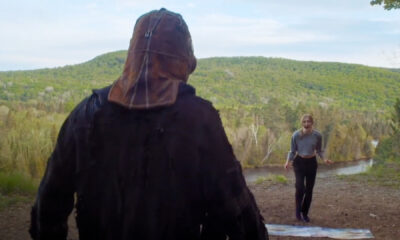
 News6 days ago
News6 days ago“In a Violent Nature” So Gory Audience Member Throws Up During Screening
-
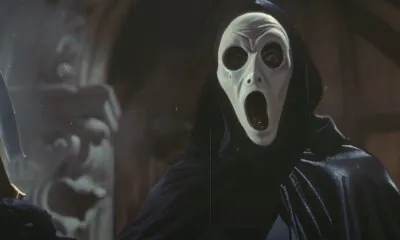
 Lists7 days ago
Lists7 days agoUnbelievably Cool ‘Scream’ Trailer But Re-Imagined As A 50s Horror Flick
-

 Movies5 days ago
Movies5 days agoShelter in Place, New ‘A Quiet Place: Day One’ Trailer Drops
-
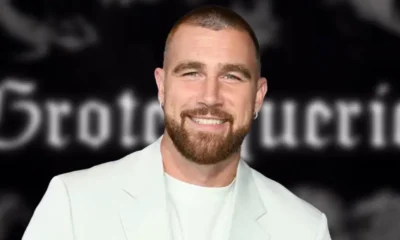
 News6 days ago
News6 days agoTravis Kelce Joins Cast on Ryan Murphy’s ‘Grotesquerie’
-
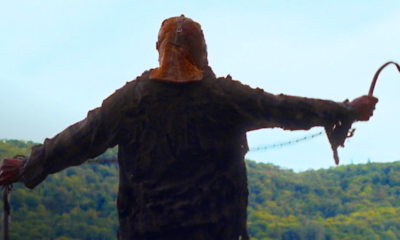
 News4 days ago
News4 days agoNew Trailer For This Year’s Nauseating ‘In a Violent Nature’ Drops
-
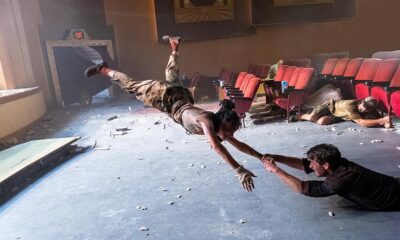
 Movies6 days ago
Movies6 days agoNew Windswept Action Trailer for ‘Twisters’ Will Blow You Away
-
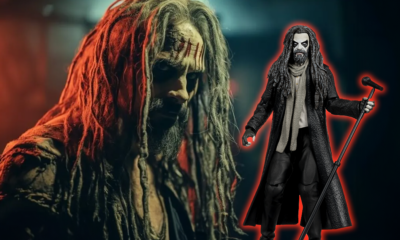
 News6 days ago
News6 days agoRob Zombie Joins McFarlane Figurine’s “Music Maniacs” Line
-
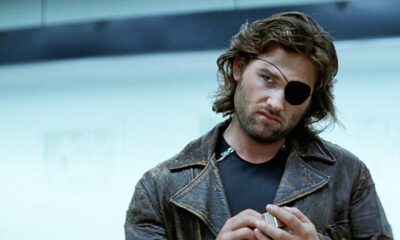
 News5 days ago
News5 days agoRadio Silence No Longer Attached to ‘Escape From New York’


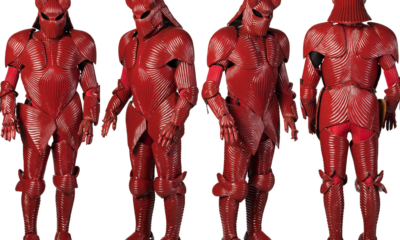

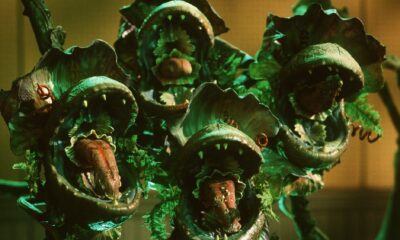





















You must be logged in to post a comment Login